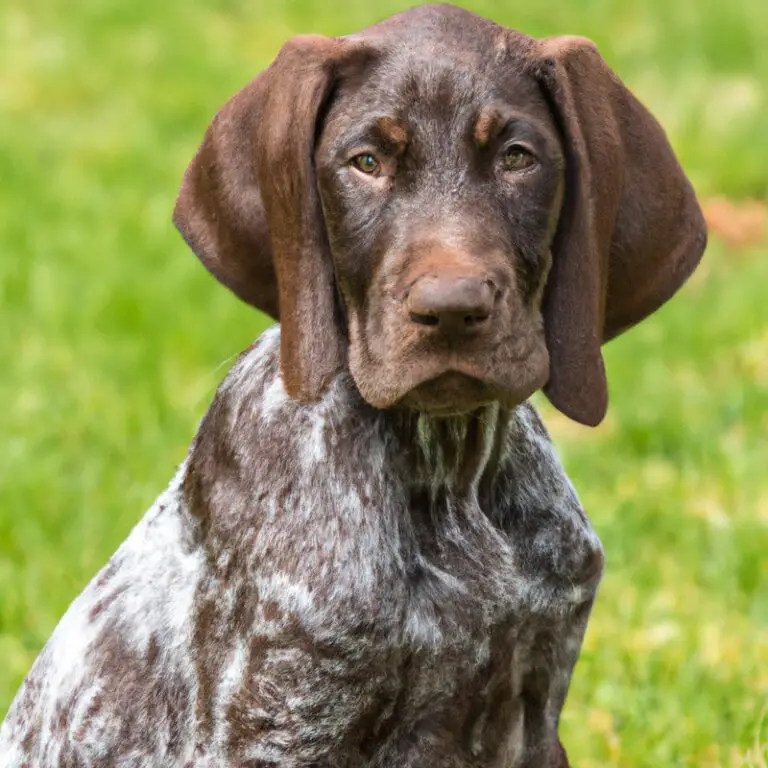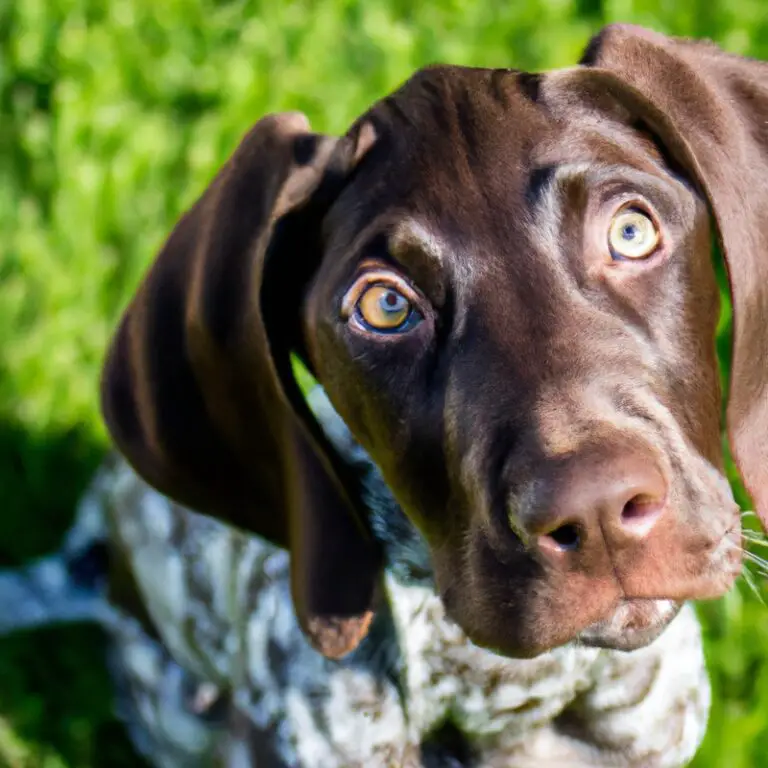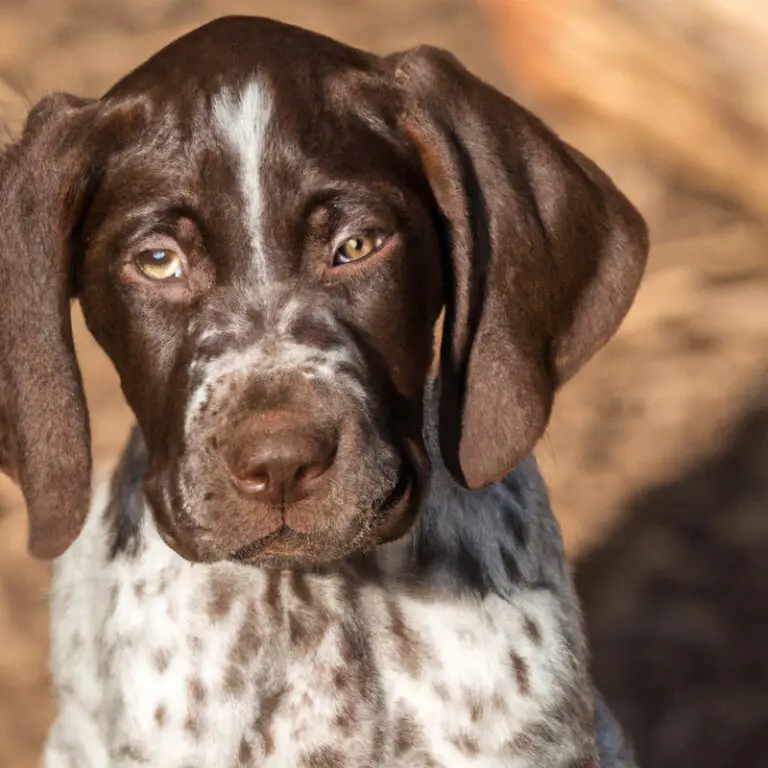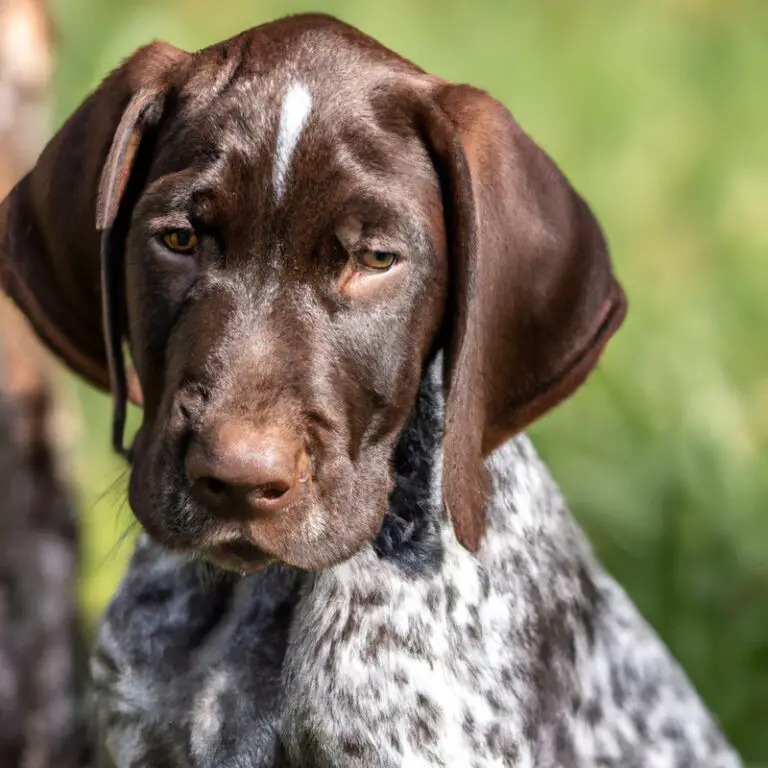What Are The Signs Of a German Shorthaired Pointer Being Anxious Or Fearful Of Strangers?
Key Takeaways:
- Increased vigilance and wariness towards unfamiliar individuals.
- Avoidance behaviors, such as hiding or seeking shelter when strangers are present.
- Display of submissive body language, like lowered head, tucked tail, or crouching.
- Aggressive reactions towards strangers, such as barking, growling, or snapping.
Do you know how to read your German Shorthaired Pointer’s emotions like a pro? Imagine this: you’re out for a walk in the park, and suddenly your once-friendly furry friend starts trembling and cowering at the sight of a stranger.
Anxiety and fear can affect our beloved pets, and German Shorthaired Pointers are no exception.
But how can you tell if your pup is feeling anxious or fearful of strangers? In this article, I’ll guide you through the common behavioral and physical signs to look out for, as well as delve into the causes behind these emotions.
Plus, I’ll share some helpful coping strategies and prevention techniques, so you can better understand and support your furry companion when they need it most.
Get ready to become your German Shorthaired Pointer’s emotional superhero!
| Signs of Anxiety or Fear in German Shorthaired Pointers |
|---|
| 1. Excessive Barking: may bark excessively or growl when strangers approach. |
| 2. Tail Tucking: may tuck their tail between their legs when feeling anxious or fearful. |
| 3. Pacing: may pace back and forth or circle around when feeling anxious or fearful. |
| 4. Trembling or Shaking: may exhibit trembling or shaking when feeling anxious or fearful. |
| 5. Hiding: may try to hide or seek shelter to avoid interaction with strangers. |
| 6. Avoidance: may actively avoid eye contact or physically move away from strangers. |
| 7. Aggression: in extreme cases, may show aggression towards strangers out of fear or anxiety. |
Understanding German Shorthaired Pointers
An Overview of German Shorthaired Pointers
German Shorthaired Pointers are energetic and versatile hunting dogs with a strong build and athletic abilities. They have a short coat and are known for their distinctive liver or liver and white coloration.
These dogs are highly intelligent, trainable, and have a friendly and outgoing nature.
They require regular exercise and mental stimulation to prevent boredom. German Shorthaired Pointers make loyal and affectionate family companions, but they thrive best in homes where they receive plenty of attention, socialization, and opportunities to use their natural hunting instincts.
Common Traits and Characteristics
Common Traits and Characteristics German Shorthaired Pointers have a number of distinctive traits and characteristics that set them apart. First and foremost, they are highly intelligent and eager to please, making them easy to train.
They are also energetic and require daily exercise to keep them mentally and physically stimulated.
These dogs are known for their friendly and outgoing nature, both with their family and with strangers. They are generally good with children and get along well with other pets, although proper socialization is important.
German Shorthaired Pointers also have a strong hunting instinct, so it’s important to keep them in a secure environment.
Additionally, these dogs are known for their loyalty and bond deeply with their owners. They thrive on human companionship and may become anxious or destructive if left alone for long periods of time.
Regular mental stimulation and quality time with their families are crucial for their well-being.
Lastly, German Shorthaired Pointers are versatile and adaptable. They excel in various activities including hunting, agility, obedience, and therapy work.
Their intelligence, athleticism, and friendly disposition make them great companions for active individuals or families who are willing to meet their exercise and mental stimulation needs.
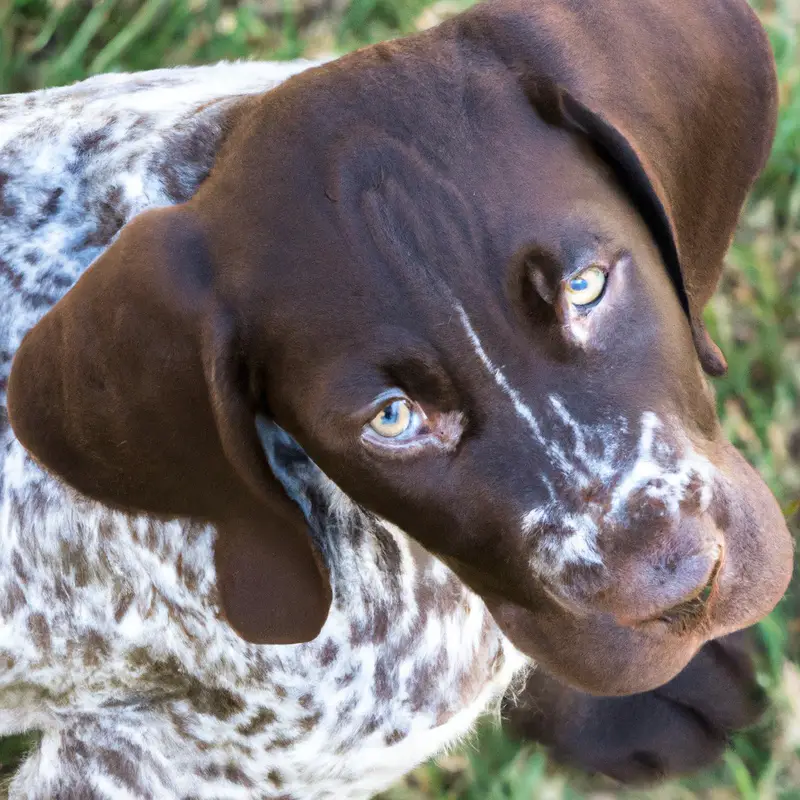
Recognizing Anxiety and Fear in German Shorthaired Pointers
Behavioral Signs of Anxiety and Fear
Behavioral Signs of Anxiety and Fear When it comes to recognizing anxiety and fear in German Shorthaired Pointers, there are several behavioral signs to look out for. First and foremost, pay attention to their body language.
If your dog is trembling, shaking, or cowering, it could be a sign of anxiety or fear.
They may also exhibit avoidance behaviors, such as hiding or trying to escape from the situation. Another common sign is excessive barking or growling.
This is their way of expressing their discomfort and trying to protect themselves.
German Shorthaired Pointers may also display destructive behavior, like chewing on furniture or digging excessively, when they are feeling anxious or fearful. Keep an eye out for changes in their appetite and sleep patterns.
Anxiety and fear can cause these to fluctuate.
Your dog may also lick their lips or yawn excessively as a sign of stress.
Physical Signs of Anxiety and Fear
Physical Signs of Anxiety and Fear When it comes to recognizing anxiety or fear in German Shorthaired Pointers, paying attention to their physical signs is crucial. Here are some common physical indicators that your German Shorthaired Pointer may be experiencing anxiety or fear:
- Body language changes: Look for signs like a tense body posture, trembling, or crouching. Their tail may be tucked between their legs, and their ears may be pinned back.
- Excessive panting or drooling: If you notice your dog panting heavily or excessively drooling, it could be a sign of anxiety or fear.
- Restlessness or pacing: An anxious or fearful German Shorthaired Pointer may exhibit restlessness by constantly pacing or moving around without settling.
- Excessive shedding: Stress can often lead to increased shedding in dogs. If you notice your German Shorthaired Pointer shedding more than usual, it might be a sign of anxiety or fear.
- Cowering or hiding: When feeling anxious or fearful, dogs may try to find hiding spots or cower in corners or under furniture to seek safety and comfort.
Causes of Anxiety and Fear in German Shorthaired Pointers
Lack of Socialization
Lack of socialization can be a major factor in causing anxiety and fear in German Shorthaired Pointers. When these dogs aren’t exposed to a variety of people, animals, and environments during their critical socialization period, they may become fearful and anxious around strangers.
This lack of socialization can make them feel uncertain and uncomfortable in new situations, leading to anxiety-driven behaviors such as excessive barking, hiding, or even aggression.
Providing proper socialization from an early age is essential to help your German Shorthaired Pointer feel more confident and relaxed around strangers.
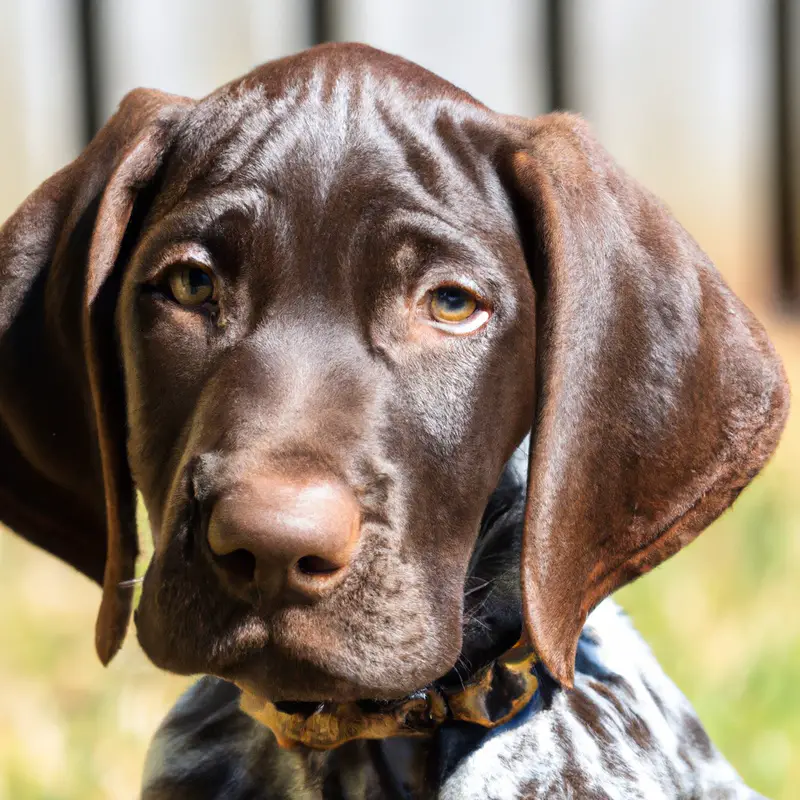
Traumatic Experiences
Traumatic experiences can have a significant impact on the anxiety and fear levels of German Shorthaired Pointers. These dogs are highly sensitive and any negative or distressing event can leave a lasting impact on their emotional well-being.
Trauma can come in various forms such as abuse, neglect, or being involved in accidents.
For German Shorthaired Pointers, traumatic experiences can be particularly challenging because they remember and associate these events with fear and anxiety. They may exhibit signs such as trembling, cowering, excessive barking, or aggression towards strangers.
It is important to understand that their reactions are a result of their past traumas and should not be ignored or dismissed.
If you suspect that your German Shorthaired Pointer has gone through a traumatic experience, it is crucial to seek professional help from a veterinarian or a dog behaviorist. They can provide appropriate guidance and training to help your dog overcome their fear and anxiety.
Patience, consistency, and positive reinforcement are key when working with a dog that has suffered traumatic experiences.
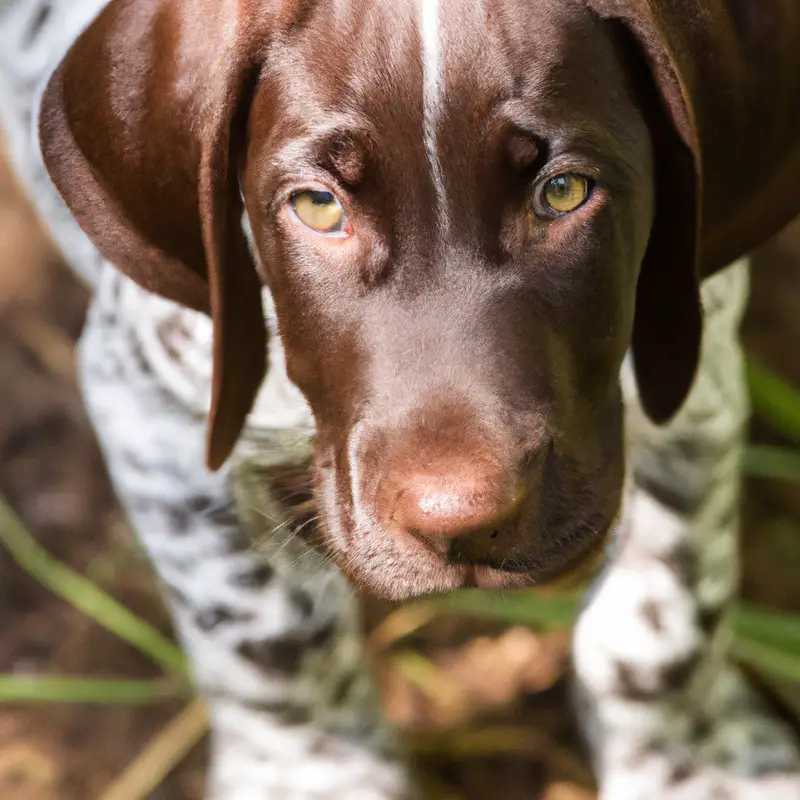
Genetic Predisposition
Genetic predisposition plays a significant role in determining a German Shorthaired Pointer’s susceptibility to anxiety and fear. Some dogs may have a natural tendency to be more anxious or fearful due to their genetic makeup.
It’s important to understand that certain traits or behaviors can be inherited from their parents or ancestors.
For example, if a GSP’s parents or close relatives have displayed anxious or fearful behaviors, there is a higher chance that the dog will inherit those traits. This genetic component doesn’t guarantee anxiety or fear, but it does raise the likelihood.
Genetic predisposition doesn’t mean an anxious or fearful GSP cannot be helped or managed.
With the right interventions, training, and socialization, it’s possible to reduce the impact of genetic predisposition and help the dog lead a more comfortable and confident life.
Coping Strategies for Anxious or Fearful German Shorthaired Pointers
Positive Reinforcement Training
Positive reinforcement training is a highly effective technique for training German Shorthaired Pointers (GSPs) who are anxious or fearful. This approach focuses on rewarding desired behaviors, rather than punishing undesirable ones.
First and foremost, it is important to find a reward that motivates your GSP.
This could be treats, praise, or even a favorite toy. When your GSP exhibits calm and confident behavior around strangers, immediately reward them with the chosen reward.
Consistency is key.
Be sure to reward your GSP every time they display the desired behavior. This will reinforce the connection between the behavior and the reward, making it more likely that they will continue to exhibit the desired behavior in the future.
Another important aspect of positive reinforcement training is timing.
The reward should be given immediately after the desired behavior is displayed. This helps your GSP understand exactly what they are being rewarded for.
Gradual Exposure Therapy
Gradual Exposure Therapy is a helpful approach for German Shorthaired Pointers who are anxious or fearful of strangers. The idea is to expose your dog to the situation or stimuli that makes them anxious in a controlled and gradual manner.
This helps them build confidence and learn that the situation is not as scary as they think.
First and foremost, it’s important to start with a low-stress environment. Begin with a distance at which your dog feels comfortable and slowly bring them closer over time.
This could involve having strangers walk by at a distance or allowing them to observe from a safe distance.
Another key aspect is to reward your dog for calm behavior. Use treats, praise, and positive reinforcement to show them that being calm in the presence of strangers is a good thing.
Slowly increase the exposure and reward them for staying calm throughout the process.
Calming Techniques and Products
Calming Techniques and Products Here are some effective ways to help calm an anxious or fearful German Shorthaired Pointer:
- Provide a safe and comforting environment: Create a designated area where your pup feels secure. Use a cozy crate or a quiet corner with their favorite toys and bedding.
- Gentle touch and massage: Dogs often find comfort in physical contact. Try gentle strokes or massage techniques to help relax their tense muscles and promote a sense of calm.
- Deep pressure therapy: Applying gentle pressure to certain areas of the body, such as with a weighted blanket or a calming wrap, can have a soothing effect on anxious dogs.
- Aromatherapy: Certain scents, like lavender or chamomile, can help relax your pup. Use pet-friendly essential oils or sprays to create a calming atmosphere.
- Calming music or white noise: Playing soft classical music or nature sounds can drown out any external noises that might be contributing to their anxiety.
- Thundershirts or anxiety wraps: These specially-designed garments apply gentle pressure to your dog’s body, providing a comforting sensation that can help reduce anxiety.
- Calming pheromone products: Synthetic pheromones, such as Adaptil, can help dogs feel more secure and reduce stress-related behaviors.
Seeking Professional Help for Anxious or Fearful German Shorthaired Pointers
Consulting a Veterinarian or Veterinary Behaviorist
If you notice signs of anxiety or fear in your German Shorthaired Pointer around strangers, it’s important to consult a veterinarian or veterinary behaviorist. These professionals have the expertise to assess your dog’s behavior and provide appropriate guidance and treatment.
A veterinarian can rule out any underlying medical conditions that may contribute to your dog’s anxious or fearful behavior.
A veterinary behaviorist specializes in animal behavior and can develop a customized behavior modification plan to help your German Shorthaired Pointer feel more comfortable and confident in social situations. They may also recommend medication if necessary.
Seek professional help to ensure the best support for your furry friend.
Finding a Certified Dog Trainer or Behaviorist
When it comes to addressing anxiety or fearfulness in your German Shorthaired Pointer, finding a certified dog trainer or behaviorist can be a crucial step. First and foremost, look for someone who is certified and has experience specifically with dog behavior issues.
This ensures that they have the knowledge and skills to assess and address your dog’s anxiety or fearfulness effectively.
Seek recommendations from other dog owners or consult your veterinarian for referrals. Conduct thorough research, read reviews, and interview potential trainers or behaviorists to find the right fit for your furry friend.
Support Groups and Online Communities
Support Groups and Online Communities can be a great resource for German Shorthaired Pointer owners dealing with anxious or fearful behavior in their dogs. These groups provide a platform for connecting with other owners who are going through similar situations.
It’s comforting to know that you’re not alone and can learn from others who have successfully tackled these issues with their own GSPs. Online communities also offer a wealth of information, tips, and advice from experts and experienced individuals.
They can help guide you in the right direction when it comes to managing and overcoming your German Shorthaired Pointer’s anxiety or fear.
Preventing Anxiety and Fear in German Shorthaired Pointers
Early Socialization
First and foremost, early socialization is crucial for German Shorthaired Pointers. It involves exposing them to different people, animals, environments, and experiences at a young age.
By introducing your German Shorthaired Pointer to a variety of situations, you can help them develop confidence and reduce the likelihood of anxiety or fear towards strangers.
This can include taking them to parks, introducing them to friendly dogs, and exposing them to different sounds and sights. Allowing them to interact positively with strangers, both adults and children, can also help them become more comfortable with new people.
Encourage gentle and positive interactions, rewarding your dog for calm and friendly behavior.
Creating a Safe and Enriched Environment
Creating a safe and enriched environment is essential for the well-being of your German Shorthaired Pointer. First and foremost, make sure your home is secure to prevent any accidents or escapes.
Check for any potential hazards, such as toxic plants or small objects that your dog could swallow.
Provide your German Shorthaired Pointer with a designated personal space where they can retreat when they want some alone time. This could be a crate or a quiet corner with a cozy bed.
Having a safe haven will help them feel secure and reduce anxiety.
Enrich their environment with plenty of mental and physical stimulation. This can be achieved through interactive toys, puzzle feeders, and regular exercise.
Take them for daily walks, play fetch, or engage in other activities that allow them to burn off energy and satisfy their natural instincts.
Socialize your German Shorthaired Pointer from an early age, exposing them to different environments, people, and animals. Gradually introduce them to new experiences and teach them positive associations.
This will help them build confidence and reduce fear or anxiety in unfamiliar situations.
Incorporate positive reinforcement training techniques to build trust and strengthen the bond between you and your German Shorthaired Pointer. This will create a positive and supportive environment that encourages good behavior and reduces stress.
Remember that each dog is unique, so pay attention to their individual needs and adjust the environment accordingly.
By creating a safe and enriched environment, you’ll provide your German Shorthaired Pointer with the best possible quality of life.
Consistent Training and Positive Reinforcement
Consistent training and positive reinforcement are key factors in preventing anxiety and fear in German Shorthaired Pointers. It’s important to establish a regular training routine and stick to it.
By consistently reinforcing desired behaviors, such as greeting strangers calmly, you can help your dog build confidence and reduce anxiety.
Positive reinforcement, such as treats, praise, and play, should be used to reward your dog for good behavior. This positive approach helps create a happy and secure environment for your German Shorthaired Pointer, minimizing the risk of anxiety and fear towards strangers.
Final Verdict
German Shorthaired Pointers can exhibit various signs of anxiety or fear when encountering strangers. These signs can manifest in both their behavior and physical state.
It is essential for owners to recognize and understand these signs in order to provide the necessary support and intervention.
By addressing the causes of anxiety or fear, implementing coping strategies, and seeking professional help when needed, owners can help their German Shorthaired Pointers live happier, healthier lives. Remember, prevention through early socialization, creating a safe environment, and consistent positive reinforcement training can also play a crucial role in preventing anxiety or fear in these wonderful dogs.
Trustworthy information and practical tips are key to providing the best care for our furry companions.


